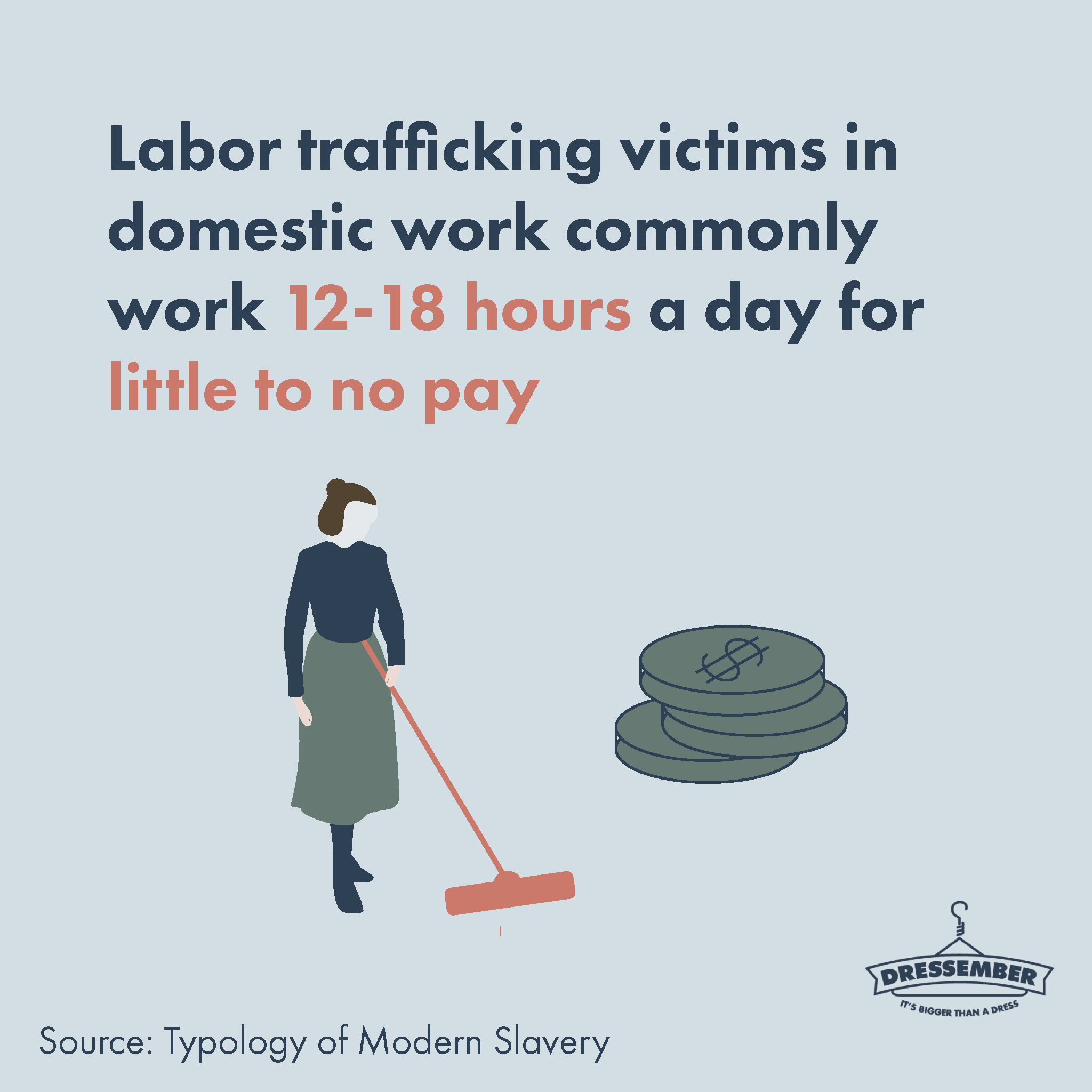What does labor trafficking in domestic work look like?
Dressember Reading Day #17
Every day during the month of December, we’re answering common questions and breaking down different aspects of human trafficking on our blog and Instagram. Join us in raising awareness about the injustice of human trafficking by sharing, donating, or joining the Dressember campaign (it’s not too late!).
Cooking, cleaning, child care, elder care, gardening are all examples of domestic work, which is defined as any work confined to the home. According to the International Labour Organization (ILO), there are almost 67 million domestic workers worldwide. There are variations in working hours, but it ranges from 10-18 hours per day and can be as much as 24/7, especially if the worker resides in the home. Domestic work is not all abusive or unethical, and in normal domestic work situations, workers are given standard working hours, adequate conditions, and have good relationships with their employers.
So, when does it become trafficking?
There is an emphasis that this work is done with little to no pay. It becomes labor trafficking when the employer uses force, fraud, or coercion to prevent the worker from leaving. Some employers may restrict movement, threaten deportation, or inflict verbal and psychological abuse. This causes the worker to feel as if they have no choice and must stay.
Where is this happening?
All over the world. Some countries in the Middle East used, and still use, the kafala system. This is a sponsorship program where a migrant worker’s immigration status and freedom of movement are bound to their employer for the period of their stay. While this employment is supposed to be temporary, many domestic workers remain for years. There are approximately 21 million domestic workers in Asia, 18 million in Latin America—where 1 in 7 employed women are domestic workers, and 5.2 million in Africa. There are unreliable numbers out of Europe, where there are large differences between country and local organization reports.
But this doesn’t happen in the United States, right?
There are approximately 2 million domestic workers in the United States and between 2007 and 2017, the National Domestic Workers Alliance and Polaris identified 8,000 cases of labor trafficking. The majority of these cases involved domestic work and this represents only a small fraction due to underreporting.
How can this happen? Are there not laws to prevent it?
Domestic work is excluded from federal laws regarding overtime pay, adequate and safe working conditions, discrimination, and the right to organize. Depending on the visa, if a worker leaves an abusive situation, they are at risk for deportation and this fear prevents workers from reaching out to law enforcement. There are also misunderstandings among policy makers and stakeholders around the concept of, and solutions to, involuntary domestic work.
Who is most vulnerable?
Women and migrants are especially vulnerable to involuntary domestic work. Women make up over 80% of domestic workers. One in six domestic workers are international migrants who are especially vulnerable to violations of human and labor rights.
But domestic workers aren’t just facts and figures. They’re real people with real stories. By taking part in Dressember, we’re declaring that they’re worthy of dignity and respect.
Further Reading:
Domestic Workers in the United States
Madeline Van Husen first decided to be a part of Dressember while procrastinating physics homework her senior year of high school and the rest is herstory. When she isn’t too busy hosting hot chocolate parties, asking people the 36 questions, or avoiding the dreaded side-hug, you can find her curled up reading a good book, creating playlists on Spotify or drinking copious amounts of tea or frozen hot chocolate. Maddy is a senior at Boston College and wants to be like her mom when she grows up.


